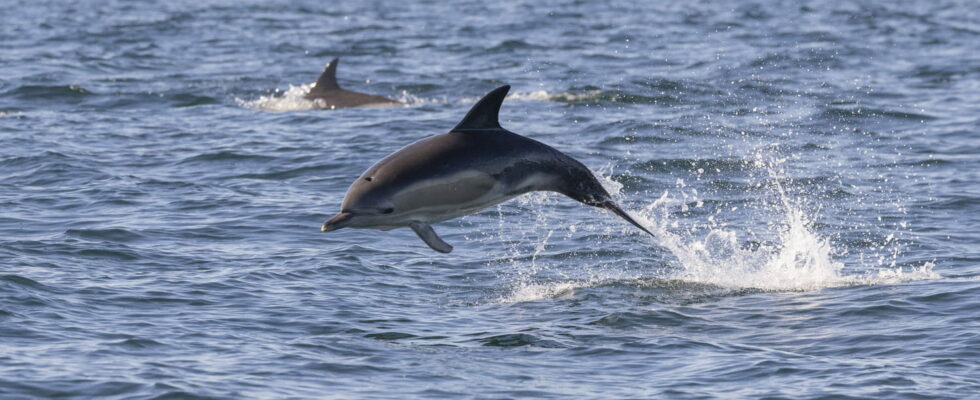Accidental capture wreaks havoc on the French Atlantic coast with thousands of dead dolphins found each year.
Around 9,000 common dolphins die each year by accidental capture on the French Atlantic coast. A figure well above the threshold of 4,900 from which the cetacean population is endangered, according to ICES, the international scientific reference body. An increase largely aggravated by the devastating effects of intensive fishing.
“Approximately 90% of autopsied corpses show traces of capture by fishing nets, mainly from pelagic trawlers, fishing methods which consist of having a huge net in the water and which catches everything, including dolphins. is destructive fishing”, denounced on RMC Lamya Essemlali, president of the Sea Shepherd France association.
When they are caught in these nets, the cetaceans try with difficulty to extricate themselves. “Either the dolphin drowns there, or it is still alive when it comes up but is finished off once on the boat,” she added. A situation that is both disastrous for the species and biodiversity. These mammals play an essential role in maintaining the marine ecosystem. “It may seem paradoxical, but as predators, they favor fish, molluscs or crustaceans resources,” explains franceinfo.
This ecological phenomenon, observed for years by scientists, is called “trophic cascade”. Because species are interdependent, when a predator comes under pressure, prey also tends to decline. In the worst case, the entire food chain can be disrupted. And for fishermen, that means fewer resources.
The Bay of Biscay, targeted by a new ban
Considering the risks ahead, a radical measure comes into force this Wednesday, January 22 to protect dolphins. From Finistère to the Spanish border, around 300 boats will remain at the dock until February 20. This “spatiotemporal” closure of fishing concerns boats over eight meters and includes vessels flying foreign flags. However, within the profession, this measure is far from unanimous, despite government compensation amounting to 80% of their turnover.
And for good reason: this is not the first time that they have been subject to such a ban. Last winter, they had already been the target of a similar measure, which helped to divide accidental captures of small cetaceans by four according to the government. Faced with a situation that persists, the executive ultimately had no real choice again this year.
The latter was in fact targeted by an infringement procedure by the European Commission and urged to act by the Council of State, contacted by environmental associations. “In order to guarantee a favorable conservation status for the common dolphin, the bottlenose dolphin and the harbor porpoise, the Council of State confirms the need for a measure to close fishing for a sufficient period of time,” reported the public institution in December.
Ultimately, the goal must be to find more targeted protection solutions and avoid widespread fishing closures like the one starting today, scientists say. For the moment, the measure is subject to renewal until 2026.
